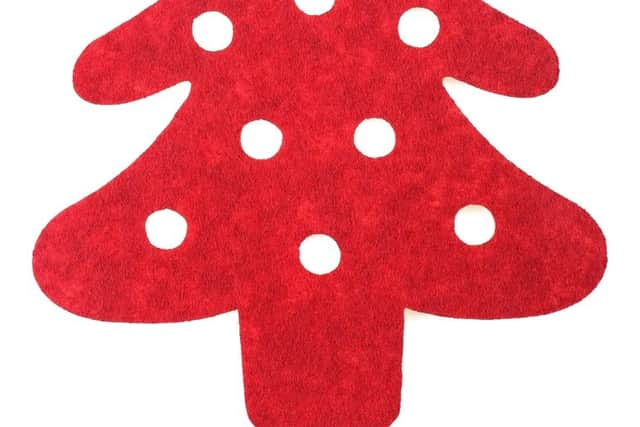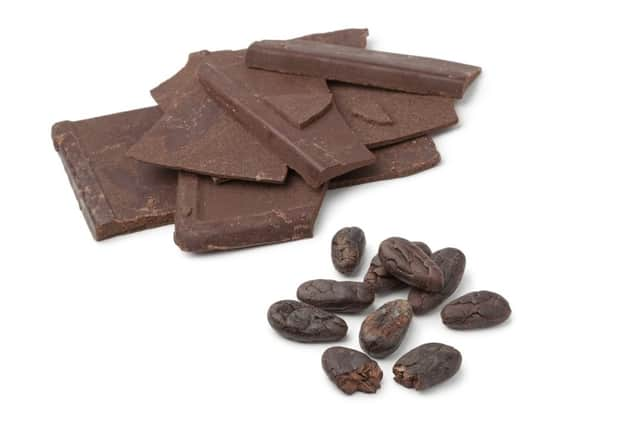How to green up the festive season - but not sacrifice the fun!


Going green
Green campaigner and consumer expert, Angela Terry, separates climate change facts from fiction and explains how you can take simple, practical steps to help save the planet (@ouronehome Twitter)
Our family spends all year looking forward to Christmas.
How can we green our festive season without sacrificing the fun?
Advertisement
Hide AdAdvertisement
Hide AdIt’s the most wonderful time of the year, but Christmas can also be the most wasteful.
From the 300,000 tonnes of card used for our festive missives to the two million turkeys, five million Christmas puddings, 17 million Brussel sprouts and 74 million mince pies that end up in the bin – as a nation we waste 30 per cent more stuff than usual.
As we’re living through a climate emergency, that’s not very jolly at all.
While it’s true that Christmas is associated with excess, by making informed choices and simple swaps you can celebrate without putting any extra strain on the planet or your pocket. Here are my tips ...
Food
Don’t shop impulsively.
Advertisement
Hide AdAdvertisement
Hide AdWrite up lists according to your recipes and try to buy just what you need.
Also read up on a few recipes for Christmas leftovers ahead of time, so you aren’t tempted to just scrape them into the bin.
With our farmers warning of a turkey shortage, maybe this could be the year you consider a meat-free main for your Christmas dinner?
Scientists at the University of Oxford calculated that cutting out meat and dairy is the single biggest thing you can do to reduce your environmental impact.
Advertisement
Hide AdAdvertisement
Hide AdOf course, you don’t have to go full vegan, but you could explore the huge number of delicious recipes for meat-free Christmas dinners on sites like Bosh.
If you’re not a cook, most supermarkets are now offering lots of ready-made, meat-free festive mains.
Gifts
Buying food and drink is a really good way to give gifts that are super useful.
But if you do want to give clothes or presents, then browsing charity shops or setting up a toy swap with friends are great ways to save money and reduce your carbon footprint.
Decorations
Avoid buying new plastic tree baubles.
Advertisement
Hide AdAdvertisement
Hide AdEither reuse those from last year or make new ones with natural materials.
The Internet is full of ideas.
You could make salt dough tree decorations, origami stars from used wrapping paper or a festive garland of dried orange slices and pinecones.
Cards and Wrap
Choose cards made from recycled materials and avoid those with glitter, as they can’t be recycled.
Most wrapping paper can’t be recycled, due to special coatings and ink.
Advertisement
Hide AdAdvertisement
Hide AdGo for a vintage look with brown paper and add a special touch with tags and reusable ribbons.
Or use old magazines, newspapers or maps as quirky wrapping alternatives. Avoid plastic tape too.
Celebrity Spot
With electric charging points to be installed in all new British homes from next year, the electric vehicle (EV) revolution is underway.
But, as ever, some celebs got there first. Hollywood heartthrobs Leonardo DiCaprio, George Clooney and Brad Pitt have all been spotted behind the wheel of EV’s, as has leading lady Cameron Diaz.


Advertisement
Hide AdAdvertisement
Hide AdMakeup mogul and reality TV star Kylie Jenner owns an electric Ferrari, while closer to home Prince Charles and our very own Lorraine Kelly drive electric.
Green Swap
On Christmas Jumper Day, December 10, don’t rush out to the shops to buy new ones for you and your family. Customise old jumpers to make them DIY. Safety pins to attach tinsel or small bells. Sew on felt shapes, perhaps a Christmas tree with button ‘baubles’.


Choosing most eco-friendly Christmas Chocolate
What would Christmas be without chocolate treats?
If you want to make them eco-friendly, there are a few things to consider – not least how the cocoa beans were farmed.
An astounding 70 per cent of the world’s cocoa is produced in West Africa, where it’s the main source of income for around 1.5 million small farms.
Advertisement
Hide AdAdvertisement
Hide AdThat’s why it’s a good idea to check if chocolate is Fairtrade, which ensures farmers are properly paid and able to farm sustainably, protecting forests.


This is crucial to the unique animals that live there, like chimpanzees, and combatting global climate change.
Also, look out for Rainforest Alliance certification. It means the cocoa beans were grown using methods that prevent deforestation.
If you can, organic chocolate is worth paying for, as it’s been made without the chemicals that harm the soil and vital wildlife, like bees.
Advertisement
Hide AdAdvertisement
Hide AdThere are also alternatives to milk chocolate, which contains dairy.
Plant-based alternatives to milk – made from things like oats and nuts – have a lower carbon footprint and are produced using less water.
Even big brands, like Cadbury and Galaxy, now offer creamy and tasty plant-based chocolate.
Not all brands are going to tick every box, but here are some sustainable ones to look out for:
Advertisement
Hide AdAdvertisement
Hide AdTony’s Chocolonely makes yummy chocolate bars – while also paying cocoa farmers fairly and training them to use environmental techniques.
Discount supermarket Aldi has partnered with Tony Chocolonely to launch its new Fairtrade chocolate bar Choco Changer.
Divine is free from palm oil, 100 per cent Fairtrade and co-owned by Ghanaian cocoa farmers.
One of the first certified organic chocolate brands in the UK, Green & Blacks’ range is also Fair Trade. Like
Divine, some of its mouth-watering range is dairy-free.
Advertisement
Hide AdAdvertisement
Hide AdNOMO stands for ‘No Missing Out’. Perfect for those with allergies, this tasty chocolate is dairy, gluten, egg and nut free. It’s also Rainforest Alliance certified.
Finally, watch out for single-use plastic in Christmas chocolates. Some brands’ festive treats have more weight
in packaging than actual yummy contents. Make sure it’s the other way round.
Also, look at what the packaging’s made from. Any plastic-based or coated packaging ends up in landfill,
Advertisement
Hide AdAdvertisement
Hide Adwhere it can take hundreds of years to break down. Things to avoid include plastic trays and cases.
Overpackaged chocolate tends to cost extra too. Why would you want to pay more for less chocolate?
Fact of fiction
Most people aren’t overly concerned about climate change: 40 per cent say environmental concerns are the country’s biggest issue, as revealed by Ipsos MORI analysis.
This is the highest ever recorded score for the issue.